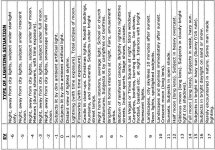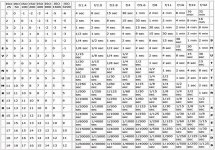Keith
The best camera is one that still works!
As a newbie photographer ... understanding and applying the 'sunny sixteen' rule has been fun and educational. To make the process easier for me I made myself a pocket sized reference chart to slip in my camera case ... pocket ... or wherever!
When I'm out taking photographs I do use my VCII meter but I also use the chart as a reference to increase my knowledge of what it is I'm actually doing. I find I'm needing my meter less and less all the time!
The two jpegs I have attached can be printed on a 5x7 or 6x4 piece of double sided photo paper ... one image each side ... fold the finished item in half and you have a pocket sized reference chart that will be incredibly useful!
If you contact me via PM and give me your email address I will send you the jpegs directly via email. 🙂
ps ... Fred Parker was the originator of these excellent tables! http://www.fredparker.com/ultexp1.htm

When I'm out taking photographs I do use my VCII meter but I also use the chart as a reference to increase my knowledge of what it is I'm actually doing. I find I'm needing my meter less and less all the time!
The two jpegs I have attached can be printed on a 5x7 or 6x4 piece of double sided photo paper ... one image each side ... fold the finished item in half and you have a pocket sized reference chart that will be incredibly useful!
If you contact me via PM and give me your email address I will send you the jpegs directly via email. 🙂
ps ... Fred Parker was the originator of these excellent tables! http://www.fredparker.com/ultexp1.htm

Attachments
Last edited:



